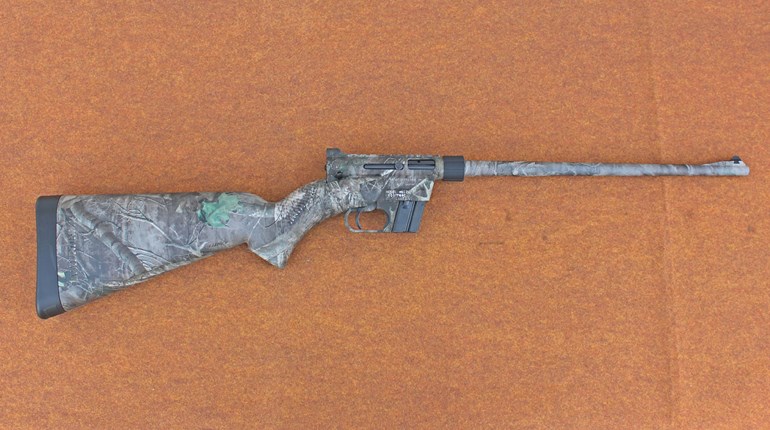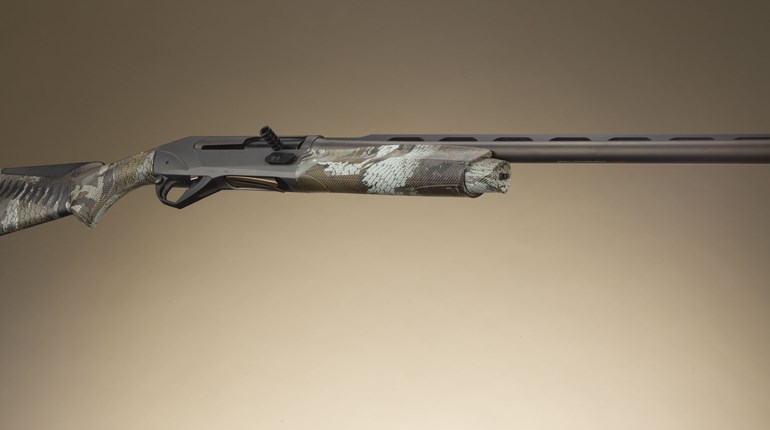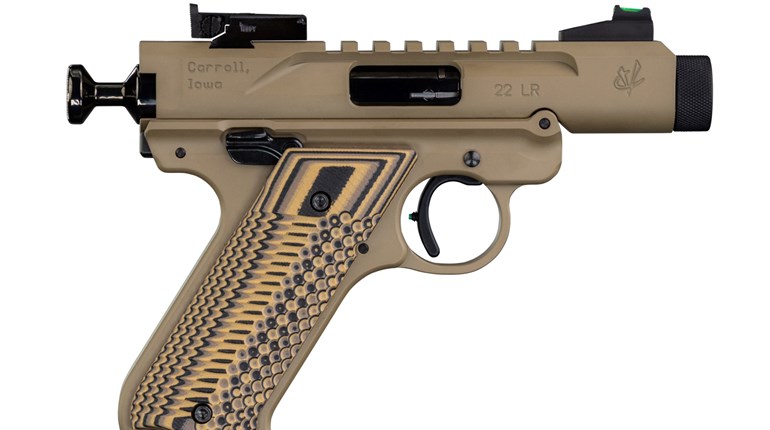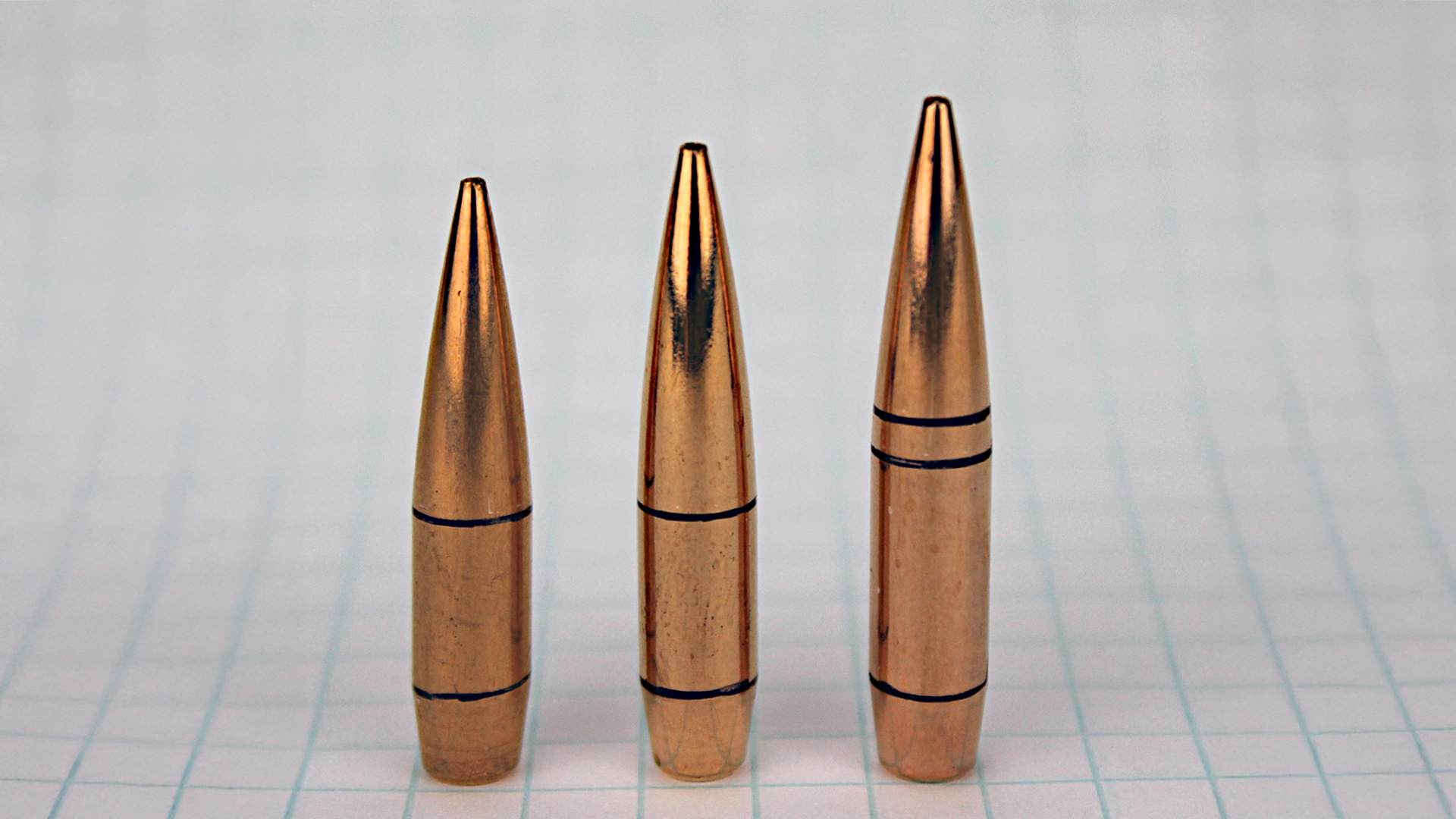
Affordable .22 rimfire rifles have been a traditional favorite for generations of American shooters. They’ve harvested a lot of small game, bounced many a tin can, and taught legions of young shooters the safe operation of firearms. Though they’ve fared less well in the competitive shooting arena, the newest addition to Savage’s Model 64 line—the Model 64 Precision ($299, savagearms.com)—could change that.

THE GUN
Built on a carbon steel receiver, the .22 Long Rifle semi-automatic Savage Model 64 Precision sports a 16½-inch heavy steel barrel with a 1:16-inch twist rate. The muzzle is threaded ½x28 to allow the installation of muzzle brakes or compensators; which can be an asset in allowing Steel Challenge timers to record shots with sub-sonic loads and avoid a re-shoot. The gun has no iron sights, but the receiver is drilled and tapped, and a six-inch Picatinny rail is installed. Fed from detachable magazines, both 10- and 20-round versions of the Savage Model 64 Precision are offered.
A fixed synthetic stock with AR-style pistol grip mates with an M-Lok compatible foreend. The length of pull is 13½ inches, with an overall length of 35½ inches. Empty weight is 5.46 pounds. Two models are available, differing only in external finish. The flat dark earth version is finished with a tan stock with black matte metal work. For my evaluation, I chose the plain matte black model.

ON THE RANGE
My first step with any gun out of the box is running a patch down the barrel. The Savage Model 64 cleans from the muzzle, which required locking the bolt back. The bolt doesn’t lock back on an empty magazine, so the bolt lock back was used. That was different, and a bit more cumbersome, than other rifles I have used. It requires pulling the bolt handle back until it is aligned with a small scalloped cut out on the receiver, and then pressing the bolt handle into the cut out to lock it. To close the bolt from the locked position, you pull it slightly rearward while pulling the handle out. It was unusual, but I quickly discovered a benefit. With many bolt lock systems, getting a bit too energetic with the cleaning rod from the muzzle, and hitting the bolt face with it, results in the bolt releasing and closing. You then have to re-lock the bolt open, and hope you don’t whack it again. But on the Savage Model 64 Precision, hitting the bolt face with the cleaning rod has no effect and it stays locked. I liked that. The safety was likewise different. Located on the upper right rear of the receiver, it’s a rounded button that is pushed forward to place off safe while displaying a bright red dot, and pulled back to put it on safe. It functioned properly whether the action was cocked or not. It’s in an unusual position, but was accessible with the trigger finger.

In checking the trigger, I found it acted much like a two-stage design. There was a lengthy amount (almost 3/8-inch) of no resistance slack take-up before hitting a firm break point. From there, the break was crisp. I measured the break on my digital gauge at four pounds.
The gun felt a bit rough when cycling the bolt, which can be expected from a model in this price range. I sprayed the trigger area with Hornady One Shot and added light oil to the bolt, knowing the gun would smooth up after a proper break-in process.
To facilitate the break-in period, I found a Trijicon six-MOA RMR reflex sight on a Picatinny mount that was currently unemployed. After slipping it onto the Savage Model 64 Precision’s rail I headed to my backyard range.

One 20-round and two 10-round magazines were provided for my evaluation. They were also a bit different. The 10-round magazines had open sides to allow counting rounds, but lacked a follower button to depress the follower and allow loading. The 20-round magazine was encased in a polymer sleeve with no follower or window. I was able to load the 10-round mags by simply pushing the cartridges down and sliding them into position. After reading the instruction manual I discovered that a magazine loader had been included. I had missed that in the box, but once I found it, loading the 20-round magazine was a bit easier. After loading both magazines with Remington Thunderbolt ammunition, I went to zero the Trijicon RMR.
Loading the magazines into the gun was also different—and noticeably more cumbersome—than other rifles. The magazine release is a small serrated lever located on the underside of the rifle forward of the magazine well. Inserting or removing a magazine requires that lever be pushed forward, and I was unable to accomplish that with just my left hand holding the magazine. Instead, I had to bring my right hand up and grip the rifle forearm at the end of the rail, roll the gun upside down, and use that thumb to push the lever while I inserted or removed the magazine with my left hand.

From my 25-yard rest the Trijicon RMR zeroed quickly. Next, I set up three white cutout targets and ran some transitions drills for an upcoming Steel Challenge match, in order to get used to the Model 64 Precision’s trigger and gun handling.
That match was a week away, so I removed the Trijicon RMR optic and installed my 6-24x scope for accuracy testing. For high-speed loads I selected CCI Mini-Mag 40-grain Target, Remington Thunderbolt and Federal’s Game Shok. As for sub-sonic loads, my choices were Lapua Center X and SK Long Rifle Match.
Our local “weather guessers” had predicted calm winds, but arriving at the range I found they’d been wrong again. A northerly wind was blowing 12 to 15 m.p.h., with large gusts directly left to right across the targets. There was no point in 100-yard tests, so I shot at 50 yards. The group sizes are reported as they were. I tried to shoot between the gusts, but failed. All groups showed one or two rounds pushed out to the right. Still, even with that rough wind, the gun displayed more accuracy than needed for Steel Challenge, and enough to punch out the 1.75-inch 10-ring on most 50-yard Rimfire Sporter targets.

After re-installing the Trijicon RMR, I headed to my club’s weekly six-stage Steel Challenge match. The gun handled well. Although I didn’t beat any of my A-Class peak times, I did get fairly close on a couple.
By this point there were more than 400 rounds through the gun, with no maintenance other than my initial cleaning and lube. There had been some malfunctions, as would be expected during break-in. They included two failures to fire with light strikes, two occasions with a 10-round magazine where the bolt failed to pick up and chamber the round after the previous round was fired, and one tip-up jam with the 20-round magazine. However, I’ve had these same malfunctions with .22 rimfire rifles costing two or three times as much the Savage Model 64 Precision does.

For those considering making the leap to .22 rimfire competition, the Savage Model 64 Precision is a viable option that won’t break the bank.


































